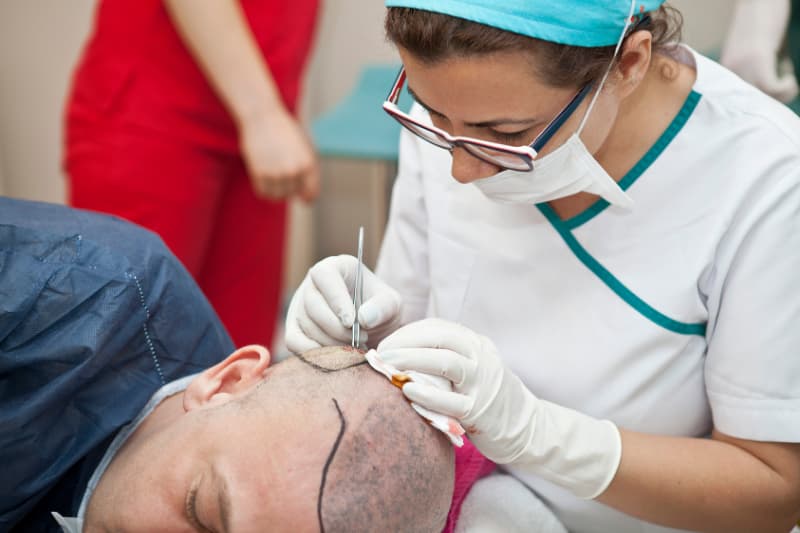تحقيق الجودة في الصحة والجمال!


Hair loss can be a distressing experience, impacting self-esteem and overall quality of life. Thankfully, there are several hair transplant types that offer hope to those seeking to restore their locks. In this comprehensive guide, we will explore various hair transplant options, their advantages, and the factors you should consider before making a decision.
Hair transplantation is a medical procedure that involves moving hair follicles from one part of the body (donor site) to a bald or balding part (recipient site). This process has evolved over the years, leading to different hair transplant types. Below, we’ll discuss these techniques in detail.
FUT, or strip surgery, is one of the earliest methods of hair transplantation. It involves removing a strip of hair-bearing skin from the donor site and dissecting it into grafts for transplantation. This technique is highly effective but may leave a linear scar.
FUT is a preferred choice when a large number of grafts are needed for extensive baldness coverage. The recovery time is longer compared to other methods.
FUE is a minimally invasive technique that involves harvesting individual hair follicles from the donor site. It leaves tiny, almost invisible scars, making it a popular choice among patients.
The recovery time for FUE is shorter, and it’s ideal for individuals with small to moderate hair loss. It’s a precise and efficient method that doesn’t involve a linear scar.
DHI is an advanced variation of FUE that employs a specialized tool for extracting and implanting hair follicles simultaneously. This method offers quicker results, less post-operative discomfort, and minimal scarring.
Some clinics offer robotic-assisted hair transplantation, which enhances the precision of the FUE procedure. Robots can perform repetitive tasks with incredible accuracy, making this a cutting-edge choice for those who value precision.
While not a transplant method in the traditional sense, PRP therapy is a complementary procedure that can enhance the results of hair transplants. PRP therapy involves injecting platelet-rich plasma from your blood into the scalp to stimulate hair growth.
Choosing the right hair transplant type is crucial. Consider the following factors when making your decision:
The extent of your hair loss plays a significant role in determining the most suitable method. FUT is ideal for extensive baldness, while FUE and DHI are better for smaller areas of hair loss.
Different methods come with varying price tags. Discuss your budget with a qualified surgeon to find an option that aligns with your financial situation.
Discuss your expectations with your surgeon. Some methods may offer better density and coverage, while others prioritize minimal scarring and a quicker recovery.
The availability of donor hair on your body is a crucial factor. A surgeon will assess this to determine the feasibility of different methods.
Q: Is hair transplantation painful? A: Hair transplantation is performed under local anesthesia, ensuring that you don’t feel pain during the procedure. Some discomfort and swelling may occur post-surgery, but it’s manageable.
Q: How long does it take to see the results? A: Hair transplant results vary, but you can typically expect to see noticeable growth within 6-12 months after the procedure.
Q: Are hair transplants permanent? A: Yes, hair transplants are permanent. The transplanted hair follicles are resistant to the hormone that causes hair loss and will continue to grow throughout your life.
Q: Can women get hair transplants? A: Absolutely. Hair transplants are not exclusive to men and can be an effective solution for women experiencing hair loss.
Q: What is the success rate of hair transplantation? A: The success rate is quite high, with most patients achieving satisfying results. Success depends on factors like the surgeon’s skill, technique, and your overall health.
Q: How long is the recovery period? A: Recovery periods vary depending on the method used. FUE and DHI typically have shorter recovery times compared to FUT.
Choosing the right hair transplant type can be life-changing. It’s a decision that should be made after careful consideration of your specific needs and expectations. With the advancements in hair restoration techniques, there is a solution for everyone. Take the first step towards regaining your confidence and a full head of hair.